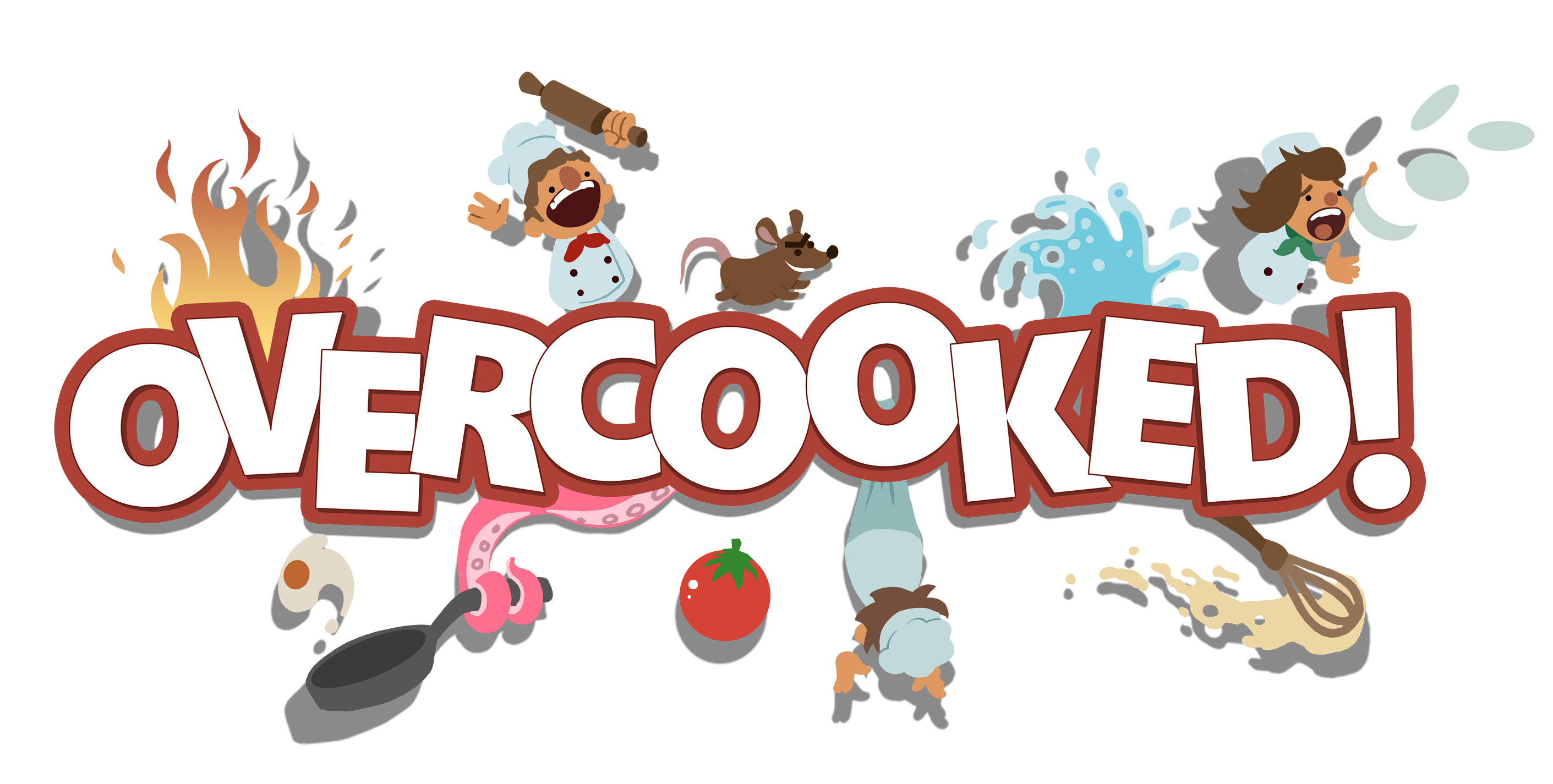
Review: Overcooked
Posted by Eric G on September 4th, 2016 | 0 Comments | Tags: Ghost Town Games , Overcooked , Team 17
I could struggle to make some deep(-dish) metaphors and puns about cooking, or just put it plainly: Overcooked is delightful. The team at Ghost Town Games have put together an experience well worth playing for anyone who has ever wondered why their order is taking so long to come out. If you’ve worked in the kitchen of a restaurant, you especially need to play this game; it boils down the famously hectic environment in a way I haven’t seen successfully done before. In the span of four minutes, one to four local players must prepare and send out dishes based on order tickets that are constantly rolling in. And don’t forget about the dirty dishes!
Overcooked is primarily a two button + analogue stick game. Right off the bat, that makes it accessible to most people who may find themselves with a PS4 controller thrust into their hands. The X button picks up ingredients, plates, etc. while the Square button interacts with them. Things get a bit more gamey once you discover the Circle button, which boosts a bit, but you’ll likely be all right skipping that for a little while. In the first few levels, you’ll mostly be making soups, as they are the simplest recipe. All you have to do is chop three of an ingredient and dump it into a pot. Once it’s done, plate it and send it through to the ravenous masses. Here’s the rub, though, the thing that makes Overcooked an incredible experience – every action has a timer and must be performed in a specific order, all the while dealing with the kitchen’s obstacles. First, and order sweeps in around the top left corner of the screen. A timer under it starts ticking down from Green to Yellow to Red. Take an ingredient out of its neatly labeled basket and drop it onto a cutting board. Next, chop the ingredient. Once done chopping, pick it up and drop it into a pot. (Make sure the pot is on a burner!) Repeat two more times with the same ingredient and wait. Once the soup is ready, bring a plate to it (not vice versa, which is a rookie mistake you’ll learn to break eventually), transfer the soup, and send it out on the conveyor belt. Your tip is decided by the how quickly you got the dish out, indicated by the colored timer underneath its ticket. If you were fast enough and the ticket timer is still in the green, you’ll earn a six point bonus in addition to the completion points. Failure to send out an order detracts from your score.
Each level has a score threshold to meet for one, two, and three stars (possibly alluding to Michelin ratings), and you’ll have to be utterly on-point in order to earn those mythical trois-etoiles. Part of the fun of the game derives from discovering new kitchens and their myriad obstacles. If you plan on playing this game, you may not want to read the rest of this paragraph. With that spoiler alert in order, let me mention some of the shockingly excellent kitchens featured in Overcooked. Early on, there are pirate ships that occasionally rock back and forth. This causes a line of counters to slide to one side of the level or the other. If you’re playing with multiple people, things get harried fast. In another level set on a highway, the ingredients truck moves forward and backward on a timer. The stationary trucks have cutting boards and pots to prep and cook in. If you get stuck in one truck without any ingredients, you have to wait for the alternating truck to get back to you before you can do anything. Depending on your personality, you may crack up with laughter at your mistake or feel your stomach drop in disappointment or start screaming at another player for not passing you ingredients when it’s clearly his job and he screwed the whole thing up and now you’re going to lose and you might as well just restart. Depends on your personality. Then there are the ice levels, which nobody really wants to talk about for fear of having a nervous breakdown.
There’s a lot that makes Overcooked a successful time management game. First off, it’s practically the epitome of the saying “too many cooks spoil the broth”. While the game can be played solo (you swap between two cooks with the shoulder buttons), it’s probably best experienced with a crew of at least three. Imagine a simpler game in the same genre – Tapper, Jane’s Hotel – but with up to four players completing tasks in the same space at the same time. Sounds like it’d automatically make things easier and faster, right? Unless you’re all clearly communicating, though, it absolutely will not. The game doesn’t take itself too seriously, a fact that scores it many points. Plot-wise, you’re travelling through time honing your craft in order to do battle with a gargantuan spaghetti and meatballs monster. Gameplay-wise, you can drop food on the floor and pick it back up, spray a flaming pot of soup with a fire extinguisher then plate the soup and send it out, etc. Little moments like this are especially hilarious to people who have worked in kitchens before. Sometimes, when the tickets keep rolling in and the “where’s my order?” calls start piling up, you just have to get the dish out of the door by any means necessary. The pacing is perfect, introducing new recipes and level obstacles in a way that consistently keeps the player engaged and wondering what could possibly come next. After having three friends over to play the game, all three of them went home, separately purchased it, and played it to completion either solo or with a significant other. I’m not sure any game I’ve shown my friends before this has had the same effect.
A copy of this game was provided by the publisher for review purposes. For more info on our review policy click here.
General Info
- Developer: Ghost Town Games
- Publisher: Team 17
- Release Date: August 2016
- Price: $12.99, £16.99
- Genre: Arcade, Cooking, Time Management
- Players: 1-4 (Local)
- Ratings: Everyone, PEGI 3
Score:
What I Like:
- Number of levels.
- Variety of kitchens.
- Music and sound design are excellent.
What I Dislike:
- 'Stickiness' of countertops sometimes questionable.




